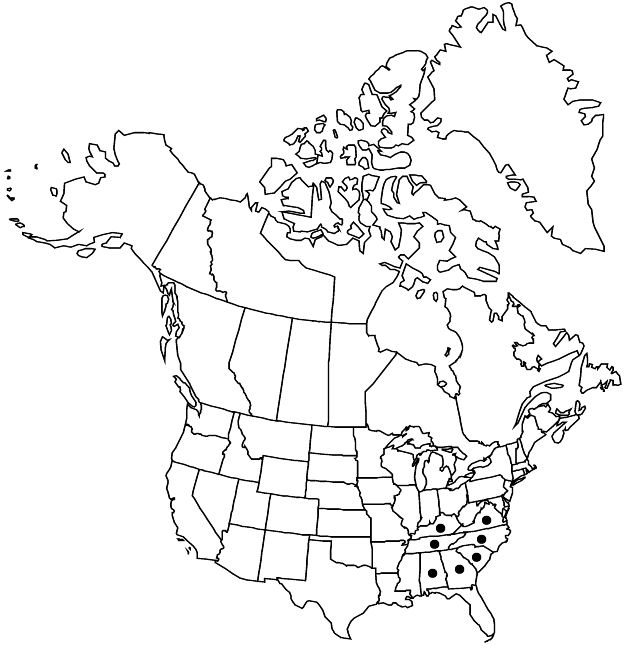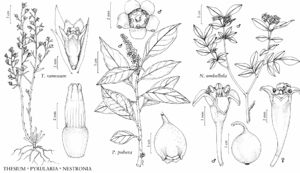Nestronia umbellula
New Fl. 3: 13. 1838.
Shrubs, to 1 m, rhizomatous, forming large colonies. Stems forming shoots from crown. Leaves: petiole 2–5 mm; blade ovate-lanceolate, 2–7 × 0.7–3.2 cm (mean 4.2 × 1.8 cm), decreasing in size toward base of shoot, base acute, apex acute, abaxial surface glaucous, adaxial surface bright green. Staminate inflorescences 3–11-flowered. Flowers fragrant, staminate 2–3 mm, pistillate 6–10 mm, petals white to greenish, margins puberulent. Pseudodrupes yellowish green, spheric, 1–2 × 0.8–1.8 cm.
Phenology: Flowering May–Jun.
Habitat: Moist and dry woodlands and stream banks.
Elevation: 20–500.
Distribution

Ala., Ga., Ky., N.C., S.C., Tenn., Va.
Discussion
Although sometimes reported as specific to pines, Nestronia parasitizes a wide variety of host plants (D. D. Horn and R. Kral 1984). The species is apparently adapted to early successional habitats, thus natural disturbance may favor its spread and establishment (G. Libby and C. Bloom 1998; L. J. Musselman 1982).
Nestronia umbellula is listed as threatened, endangered, or of conservation concern by each state in which it occurs except Alabama, which does not provide regulatory protection to plants.
Selected References
None.
